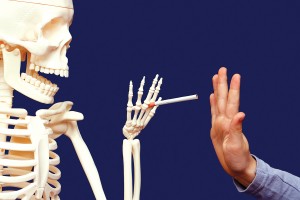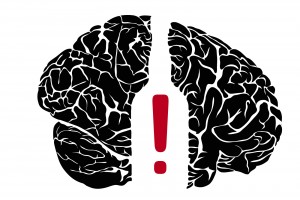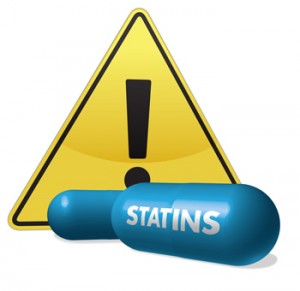New research, more extensive than previous research has shown that no amount of alcohol is good.
This is completely against the widespread belief that moderate consumption of alcohol would prevent heart disease.
Specifically, previous research had shown the following: one glass of alcohol per day for women and 2 glasses of alcohol for men was reportedly make us live longer.
New research with larger population numbers
But a new study involving much larger population groups, all ages, and drinkers versus non-drinkers came to a different conclusion. It concluded that the previous recommendation was based on only heart attack rates, but excluded other causes of sudden death like heart failure, a rupture of the aorta (aneurysm), high blood pressure that kills (fatal hypertensive disease) and strokes. With the compilation of all these cardiovascular diseases, the statistics suddenly started to look different. Now even small amounts of alcohol killed. What is worse, there was clear evidence that binge drinkers have much worse survival statistics than moderate drinkers. When you drink according to the American Heart Association’s recommendation, you drink smaller amounts of alcohol daily.
Binge drinking
But many of us like to live it up on weekends or whenever there are friends over who also like a few drinks. This binge drinking habit lowers the life expectancy by an average of 10 years. It does so because the list of complications I mentioned above. In addition there are alcoholic liver cirrhosis, pancreatitis and various cancers that shorten your life.
Global health study
The funders of this global health study was the Bill and Melinda Gates Foundation, and it looked at the burden that alcohol puts on 195 countries. The original study appeared in the Lancet. The combined study population was 28 million individuals. There were 649,000 cases of various deaths due to alcohol. Here is a summary of the abbreviated outcome of the global health study. As you can see from this, there is no safe level of alcohol consumption as even small amounts of alcohol over a long period of time lead to significant damage in the body. You can prevent heart attacks to a certain extent. But instead people die from a ruptured aorta, from strokes or from heart failure. The leading cause of death for men and women age 15 to 49 worldwide was alcohol. It accounted for almost 1 in 10 deaths.
Some alcohol-related statistics
The following were the observations in the study.
- Over 300 disabilities and diseases were directly related to alcohol consumption. The findings were collected in 195 countries, classified by age and sex. The data was gathered between 1990 and 2016.
- Globally, 2.4 billion people drink alcohol. 25% are women who consume 0.73 drinks on average each day, 39% are men drinking 1.7 drinks a day.
- Denmark, Norway and Germany drank the most alcohol globally.
- For ages 50 and up the leading causes of death were: road injuries, suicides and tuberculosis.
More statistics
- Most deaths caused by alcohol came from cardiovascular disease and cancer for all countries.
- When you look only at drinkers, the standard recommendation of the American Heart Association regarding low alcohol consumption seems true. But the new study compared non-drinkers with drinkers. From this it is clear that even one drink a day has a risk of premature death.
- At the age of 40 cutting down long-term alcohol use will add 1 to 2 years of life expectancy.
- For all ages 2.8 million people die globally every year from alcohol related diseases.
- Half of the world does not drink at all. This means that the ones, who drink, consume double as much as the statistics show.
- Americans prefer beer. They drink about 27 gallons of beer, 2.6 gallons of wine and 2.2 gallons of spirits per adult/year.
Common clinical conditions from alcohol consumption
Binge drinking is the consumption of 5 drinks or more in an evening for men or 4 drinks for women. The CDC is concerned about binge drinking, because of its association with significant organ damages. There are 4 major concerns regarding these effects. Heart disease and cancer; diabetes; memory loss and appearance. In the following I will zero in on these alcohol-related conditions.
Heart disease
As this article pointed out above, there is a very limited protective effect, but mostly in above 55-year-old women who drink in moderation (1 glass of alcohol; per day). They have some protection from developing heart attacks, because their LDL cholesterol gets lowered and their clotting system is influenced in positive ways. But 6% of breast cancer in women is due to the effect of alcohol consumption, which is a downfall. For both men and women binge drinking is what kills. Binge drinkers who drink more than 100 grams of alcohol per week (more than 7 drinks in the US) experience increased deaths. The causes are heart failure, strokes, fatal hypertensive disease and fatal aortic aneurysm, where the main artery bursts. Apart from that alcohol-related pancreatitis and liver cirrhosis can kill as well.
Cancer
A relatively new finding is that alcohol has a close relationship to causing various cancers. Alcohol weakens the immune system. Also, alcohol has a negative influence on the bacterial composition, the microbiome in our digestive tract. This can be a cause for colon cancer. Liver cancer, mouth cancer and breast cancer also has a direct relationship to increased alcohol consumption. Esophageal cancer and laryngeal cancer are also related to alcohol consumption.
Diabetes
Alcohol can stimulate the pancreas to release insulin, which may give you hypoglycemic attacks. As alcohol contains empty calories, over the course of several years alcohol consumption can add to your weight, causing obesity and type 2 diabetes. As diabetes has detrimental effects on the heart and blood vessels, this mixed with alcohol consumption, can worsen cardiovascular disease thus increasing the risk for heart attacks and strokes.
Memory loss
In the beginning of chronic alcohol consumption you may enjoy the relaxing effect of alcohol. This is merely the toxic effect of alcohol on brain cells. Alcohol has the effect of inhibiting brain cells, which makes you feel relaxed, super-sociable and even silly. In reality you are starting to loose control. After several years of this effect you are left with feelings of anxiety, depression and anger. This is when trouble starts to occur. People out of control are more likely to get into fights and get injured or killed. People can develop blackouts where they do not remember parts of the evening or an entire event. Memory loss is starting. The hippocampus is an important part of the brain that is involved in processing short- term memory into long-term memory. A form of dementia can occur that was brought on by chronic alcohol overconsumption.
Appearance
Alcohol dries out the skin cells and body cells. The face gets wrinkles. Your skin looks parched and gives you the appearance of a prematurely aged person. Alcohol can interfere with your sleep and when you have a lack of it you end up with dark circles around your eyes as well as puffy eyes. It does not make for a good picture, whether it happens inside the body or on your skin!
Conclusion
A new study that was larger and more comprehensive than any previous study has exposed the myth that one drink for women and two drinks for men would protect you from heart disease. It may protect you from heart attacks, but it definitely does nothing to protect you from other heart conditions. There is also sudden death from heart failure, a rupture of the aorta (aneurysm), high blood pressure that kills (fatal hypertensive disease) and stroke. When you factor all that in as well, even your low, moderate alcohol consumption has health risks. The global health study, funded by the Bill and Melinda Gates Foundation looked at the burden that alcohol puts on 195 countries. The combined study population was 28 million individuals.
Alcohol related deaths and diseases
649, 000 registered cases of various deaths occurred due to alcohol. This included deaths from traffic accidents, injuries, cancer, heart disease and suicide. This global study compared the life expectancy and disease frequencies of alcohol-consuming people with non-alcohol consuming people. It concluded that non-alcohol consuming people live on an average up to 10 years longer than their alcohol-consuming counterparts. No studies up to now have been that comprehensive. The results from twenty-eight million people speak for themselves, and the death statistics are clear. It is worthwhile to look at the details and draw your own conclusion.















